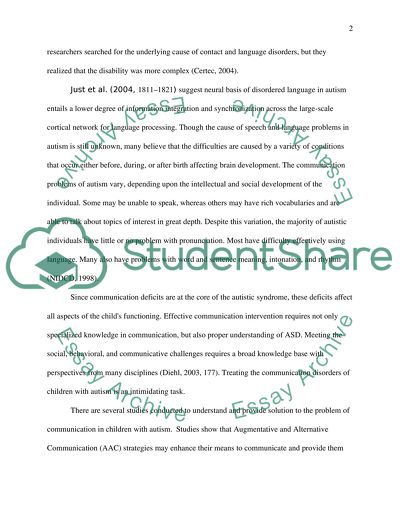Cite this document
(“Language and Autism Essay Example | Topics and Well Written Essays - 1000 words”, n.d.)
Language and Autism Essay Example | Topics and Well Written Essays - 1000 words. Retrieved from https://studentshare.org/miscellaneous/1537527-language-and-autism
Language and Autism Essay Example | Topics and Well Written Essays - 1000 words. Retrieved from https://studentshare.org/miscellaneous/1537527-language-and-autism
(Language and Autism Essay Example | Topics and Well Written Essays - 1000 Words)
Language and Autism Essay Example | Topics and Well Written Essays - 1000 Words. https://studentshare.org/miscellaneous/1537527-language-and-autism.
Language and Autism Essay Example | Topics and Well Written Essays - 1000 Words. https://studentshare.org/miscellaneous/1537527-language-and-autism.
“Language and Autism Essay Example | Topics and Well Written Essays - 1000 Words”, n.d. https://studentshare.org/miscellaneous/1537527-language-and-autism.


